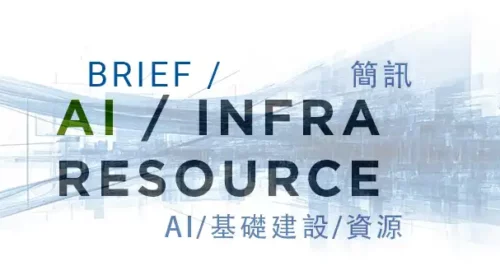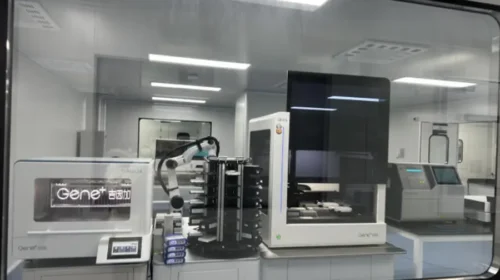Tongshifu rides China’s ‘goods economy’ to IPO

The Xiaomi-backed leading maker of copper-based cultural and creative crafts is seeking to list in Hong Kong, feasting on the country’s growing love of kitsch
Key Takeaways:
- Tongshifu has filed to list in Hong Kong, boasting a profit that surged nearly 80% last year and a list of backers including Xiaomi
- Online direct sales, many for crafts based on its self-developed IPs, account for a sizable share of the company’s revenue
By Bai Xinrui
The “goods economy” is all the rage these days, reflecting a growing Chinese love of kitsch, collectibles and role-playing items as forms of escapism in economically troubled times. A growing field of companies are cashing in on the craze, led by Pop Mart (9992.HK), whose stock has surged many-fold this year on the popularity of its collectible toys. Rival toymaker Bloks (0325.HK) has also been on a winning streak since going public earlier this year.
Now, Hangzhou Tongshifu Cultural and Creative (Group) Co. Ltd. is hoping to join that pair as the latest “goods economy” stock for investors, filing earlier this month for a Hong Kong IPO.
Founded in 2013 by Yu Guang, the company makes copper-based cultural and creative crafts. It has collected its own list of relatively big-name investors since then, including Beijing GX Equity Fund, as well as Tianjin Jinmi and Shunwei, which are linked to Xiaomi and its charismatic founder Lei Jun. Yu currently holds 26.27% of the company’s stock, while Xiaomi is second with 9.56%, according to its listing document.
Former Shenzhen listing candidate
Tongshifu is no newcomer to IPOs. It previously considered listing on the Shenzhen Stock Exchange’s Nasdaq-style ChiNext Board, but later aborted the plan and pivoted to Hong Kong, according to the listing document. It cited market conditions and the strategic desire to engage with international investors to facilitate a potential future overseas expansion.
Driven by growing digitalization of content creation and collector enthusiasm, the global market for copper-based cultural and creative crafts grew from 4.57 billion yuan ($634 million) in 2019 to 6.27 billion yuan last year, averaging 6.5% annual growth over that time, according to third-party data in Tongshifu’s listing document. As global demand continues to grow, sales are expected to reach 8.71 billion yuan by 2029, rising by 6.8% annually between 2024 and 2029. The Chinese market is a major driver of that growth, projected to reach 1.87 billion yuan in 2029, representing 21.5% of the global market by that time.
China’s domestic copper-based cultural and creative crafts market is growing faster than the international market as local consumers take interest in products drawn from the latest national fads. The trend could even get some government support from initiatives such as those detailed in a document titled “Key Projects of the Inheritance and Development of Fine Traditional Chinese Culture during the 14th Five-Year Plan Period.”
Such documents emphasize commercial development of traditional Chinese crafts and intangible cultural heritage, as well as the modernization of craft industries, which could catalyze Tongshifu’s market going forward. Such government initiatives often bring extra support to sectors they target through things like grants and subsidies for people who buy such products.
Concentrated market
The copper-based cultural and creative crafts industry in which Tongshifu operates isn’t especially crowded. According to the listing document, the sector’s top three companies accounted for as much as 70% of sales last year. Among those, Tongshifu is the undisputed leader with 35% of sector-wide revenue and 44.1% of online sales.
The company’s business consists of three main segments: direct sales, which accounted for the big majority 76.7% of its revenue last year; distribution, which made up 20.5% of sales; and consignment, which was the smallest at 2.8% of its 2024 revenue. The lion’s share of direct sales are online, over popular platforms like Tmall, JD.com and Douyin, accounting for as much as 92% of total direct sales and 70.5% of the company’s revenue. Tongshifu’s products are on the pricier side, with its average transaction value per online customer at more than 750 yuan.
Offline, the company is also developing other new channels. It was operating nine directedly managed stores in high-traffic, strategically important commercial sites in new tier-one cities and tier-two cities across China at the end of last year.
A key element to success in the “goods economy” is developing your own intellectual property (IP), which is far more profitable than licensing characters from third parties, but is also costlier and risky if your self-developed IPs don’t succeed. Tongshifu derives a substantial share of its revenue from products based on self-developed IP, representing around 90% of its revenue over the last three years. It generated about 1,000 new original IPs over that period, and also rolled out copper-based accessories and crafts based on licensed IPs from franchises such as Kung Fu Panda, Transformers and Jurassic World.
The “goods economy” is also highly seasonal, concentrated around certain holidays and festivals due to such products’ suitability as gifts. Tongshifu says its sales tend to run especially hot during China’s “Double 11” and “Double 12” shopping festivals in November and December, respectively, as well as during the Lunar New Year holiday and other major holidays such as the Oct. 1 National Day and Mid-Autumn Festival.
Rising and falling with copper prices
Tongshifu has been on a relatively solid growth trajectory, with its revenue rising 12.8% last year to 571 million yuan, as its profit grew by an even faster 79% to 78.98 million yuan. At the same time, operating costs as a percentage of revenue have come down from 67.8% in 2022 to 64.6% last year.
Copper remains the company’s biggest cost, accounting for about half of its total cost of revenue over the last three years. That could be problematic in the future, since global demand for copper is likely to rise, driven by arrival of the AI age and associated need for upgrades of aging power grids in the U.S. and Europe. Growing demand for the metal from such industrial clients could drive up copper prices, which would pressure Tongshifu’s profit margins.
In terms of valuation, “goods economy” peers like Pop Mart, Bloks and Japan’s Sanrio (8136.JP), creator of the Hello Kitty franchise, currently trade at relatively high forward price-to-earnings (P/E) ratios, including 35 for Pop Mart, reflecting strong investor demand for their stock. That could bode well for Tongshifu if it completes its listing, which could secure a forward P/E ratio of between 20 and 30 times. Such a multiple would value it at between 1.6 billion yuan and 2.4 billion yuan – a fairly substantial sum for a company selling copper toys that are serious business.
To subscribe to Bamboo Works weekly free newsletter, click here





